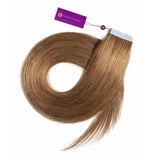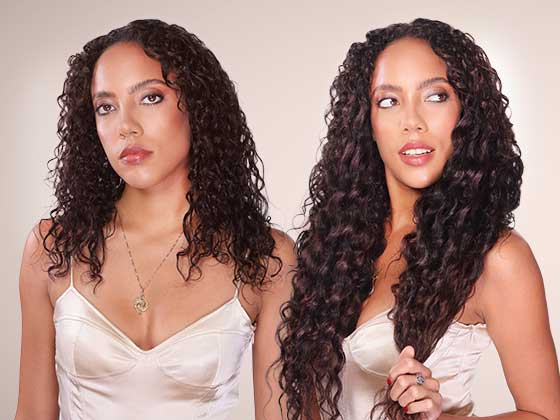Have you ever wondered why your hair isn't looking as great as it should, despite all your efforts? The answer might lie in your scalp. Scalp cleansing is a crucial step in maintaining healthy hair and preventing a range of scalp-related issues. Just like your face needs occasional deep cleansing, your scalp requires some extra care, too.
Below are the signs that indicate the need for scalp cleansing and provide you with a step-by-step guide to effectively cleanse your scalp.

What is scalp cleansing?
Scalp cleansing is an essential practice in maintaining a healthy scalp and lustrous hair. It involves removing impurities, excess oil, product buildup, and dead skin cells from the scalp. By doing so, scalp cleansing promotes a balanced environment, allowing the hair follicles to thrive and produce healthy strands.
The purpose of scalp cleansing goes beyond simply removing dirt. It helps to unclog hair follicles, which can become blocked by sebum buildup and styling products over time. When hair follicles are obstructed, it can lead to issues such as hair thinning, slowed hair growth, and even scalp conditions like dandruff or itchiness.
By incorporating regular scalp cleansing into your hair care routine, you can create an optimal environment for hair growth and overall scalp health. You can support the natural rejuvenation process of the scalp, ensuring that each hair strand receives the nourishment it needs to grow strong and vibrant.
Common signs you need scalp cleansing
Recognizing the signs that indicate the need for scalp cleansing is essential for maintaining healthy hair and preventing scalp-related issues. Here are some common signs that suggest it's time to detox your scalp:
- Itchy scalp: If you find yourself constantly scratching your scalp, it could be a sign of buildup trouble. An itchy, flaky scalp is often caused by product buildup or even dandruff. Cleansing your scalp can help alleviate the itchiness and restore comfort.
- Excessive hair fall: Experiencing excessive hair fall can be distressing. When your hair's roots don't receive adequate circulation due to buildup on the scalp, they may weaken and result in increased shedding. A scalp detox can help improve blood flow and promote healthier hair growth.
- Oily scalp: An overly oily scalp is a sign of an imbalance. Overactive sebum glands produce excessive oil, leading to buildup at the hair roots and attracting dirt that clogs the pores. Cleansing your scalp helps regulate sebum production and restore balance.
- Dandruff on the scalp: Dandruff can be uncomfortable and embarrassing. If you notice visible flaking and falling skin on your scalp, it's likely a sign of pore-clogging. Regular scalp treatments and cleansing can provide relief from dandruff and maintain a healthy scalp.
- Pain in the scalp: Pain or sensitivity when touching your hair can indicate the presence of excess dead skin or more severe scalp conditions. If you experience persistent scalp pain even after cleansing, it's advisable to seek professional advice from a dermatologist or trichologist.
- Odor on the scalp: A healthy scalp should never emit an unpleasant odor. If you notice an unsightly smell, it could be a sign of oil buildup that needs to be removed through a comprehensive scalp detox.
Step-by-step guide to proper scalp cleansing
Here’s how to cleanse your scalp with a step-by-step guide effectively:
Step 1: Rinse your hair thoroughly.
Start by thoroughly rinsing your hair and scalp with water. Massage your scalp and finger-comb through your hair while rinsing to remove dirt and product buildup.
Step 2: Choose a scalp cleanser.
Consider using a scalp cleansing oil for an effective and nourishing cleansing experience. Create a DIY scalp cleansing mixture by combining 10 drops of tea tree oil with 1 tablespoon of coconut oil. Gently apply the mixture to your scalp, ensuring thorough coverage. For better absorption, cover your head with a shower cap, allowing the oils to penetrate deeply into your scalp.
Step 3: Steam your scalp.
Fill a bowl with comfortably hot water and a few drops of essential oil. Create a tent-like structure with a towel, covering your head and the bowl to trap the steam. Lower your head towards the bowl and relax for 10-15 minutes, allowing the steam to open up your hair follicles. Massage your scalp afterward to stimulate blood circulation.
Step 4: Shampoo your hair thoroughly.
Begin by wetting your hair completely with warm water. Take an appropriate amount of your chosen shampoo and lather it between your palms. Apply the shampoo to your scalp, massaging gently with your fingertips to create a rich lather. Work the lather through your hair, focusing on the roots and areas prone to buildup. Rinse your hair thoroughly, ensuring all the shampoo is removed.
Step 5: Condition your hair.
Apply a generous amount of conditioner to the lengths and ends of your hair. Gently comb through your hair with your fingers or a wide-toothed comb to ensure even distribution. Leave the conditioner on for a few minutes to allow it to penetrate and moisturize your hair deeply. Rinse thoroughly with cool water to seal the cuticles and enhance shine.
Step 6: Use a clarifying shampoo.
To thoroughly cleanse and eliminate buildup, use a clarifying shampoo once a week or as needed. Apply it to your scalp and hair, massaging gently for a rich lather. Concentrate on areas prone to product buildup or excess oil. Rinse thoroughly to ensure complete removal. This step deeply cleanses your hair, removing impurities and leaving it refreshed.
What Are The Benefits of Scalp Cleansing?
It's essential to nourish the scalp for optimal hair health. While a lot of individuals suffer from poor scalp health, there are several ways to treat and prevent it while making the most of your salon visit.
Incorporating regular scalp cleansing into your hair care routine offers these benefits:
It can relax your mind and body
Beyond the physical benefits, scalp treatments provide a moment of tranquility and relaxation. The gentle massage techniques and soothing products used during the treatment can help alleviate stress, promote relaxation, and leave you with a rejuvenated state of mind.
Unclogs your hair follicles
Scalp treatments effectively cleanse and unclog hair follicles, removing debris, excess oil, and dead skin cells. This unclogging process allows hair follicles to breathe and function optimally, promoting healthier hair growth and preventing issues like follicle blockage-induced hair loss.
Stimulates your blood flow
The massage techniques used during scalp treatments stimulate blood circulation in the scalp. This increased blood flow nourishes the hair follicles, delivering essential nutrients and oxygen, which can result in improved hair health, strength, and vitality.
Solution to your dandruff problems
Scalp treatments can be a game-changer for those struggling with dandruff. They help remove excess flakiness, reduce scalp irritation, and rebalance the scalp's moisture levels, providing relief from dandruff-related issues and promoting a healthier scalp environment.
Prevents thinning and hair loss
By promoting a clean and healthy scalp, scalp treatments contribute to preventing hair thinning and loss. A well-nourished and unclogged scalp is vital for maintaining strong, resilient hair follicles and reducing the chances of hair breakage or premature shedding. If you do encounter thinning, thankfully there are easy products you can use to overcome the issue.
People Also Ask:
What is the best way to cleanse your scalp?
To cleanse your scalp effectively, use a two-step approach with a clarifying shampoo and hydrating conditioner. Wet your hair, apply the clarifying shampoo to remove buildup, and massage it into your scalp, focusing on oily or product-heavy areas. Rinse thoroughly. Then, apply the hydrating conditioner to the lengths of your hair, excluding the scalp, to restore moisture and nourish your strands. Leave the conditioner on for a few minutes before rinsing well. This routine will leave your scalp refreshed and your hair revitalized.
Do I need a scalp cleanser?
Yes, using a scalp cleanser is highly recommended for maintaining a healthy scalp. Regular shampooing alone may not effectively remove all the dirt, excess oil, and product buildup from your scalp. A dedicated scalp cleanser helps to cleanse the scalp thoroughly and promotes a balanced and clean scalp environment. It can address specific scalp concerns like dandruff, dryness, or excessive oiliness, providing targeted care for your scalp's health.
What does scalp cleansing mean?
Cleansing the scalp refers to the process of thoroughly removing dirt, excess oil, sweat, and product buildup from the scalp. It involves using appropriate cleansing products and techniques to create a clean and balanced environment for healthy hair growth. It also helps to remove impurities, unclog hair follicles, and maintain scalp health.
Is it good to deep clean your scalp?
Yes, deep cleaning your scalp periodically can be beneficial for maintaining a healthy scalp and hair. Deep cleansing involves using specialized scalp cleansers, scrubs, or treatments that provide a more intense cleansing action. It helps to remove stubborn buildup, exfoliate the scalp, and promote a refreshed and revitalized scalp environment. Deep cleaning can be particularly useful for individuals with oily scalps, frequent product use, or specific scalp concerns.
Treat Yourself With The Best Scalp Cleansing Service/Product
Incorporating scalp cleansing into your hair care routine is crucial for maintaining healthy hair and preventing scalp-related issues. By removing impurities, excess oil, and product buildup from the scalp, you create a balanced environment for optimal hair growth.
The benefits of scalp cleansing are manifold, including relaxation, unclogged hair follicles, improved blood flow, relief from dandruff, and prevention of thinning and hair loss. Remember to choose the best scalp cleansing service or product to pamper and revitalize your scalp. This way, you can take charge of your scalp health and enjoy the luscious locks you deserve.















